Notable NBA Draft Trades of the Lottery Era
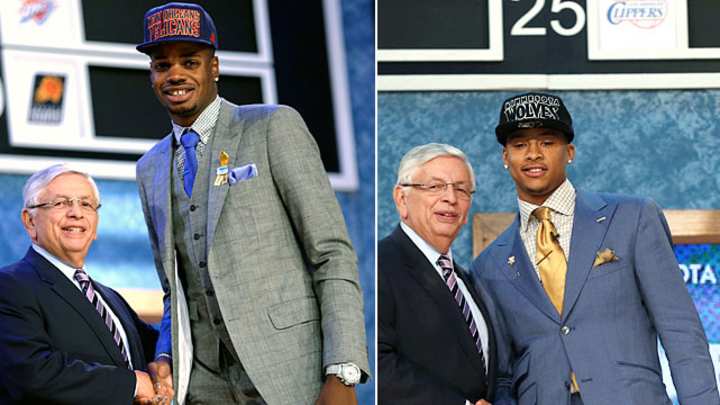
Notable NBA Draft Trades of the Lottery Era

11 players selected in the first round of the 2013 NBA draft were traded shortly thereafter, including Nerlens Noel (drafted 6th by New Orleans, then traded to Philadelphia) and Trey Burke (drafted 9th by Minnesota, then traded to Utah). Only time will tell how these moves will pan out. Here are some notable NBA Draft trades over the last three decades.
2008
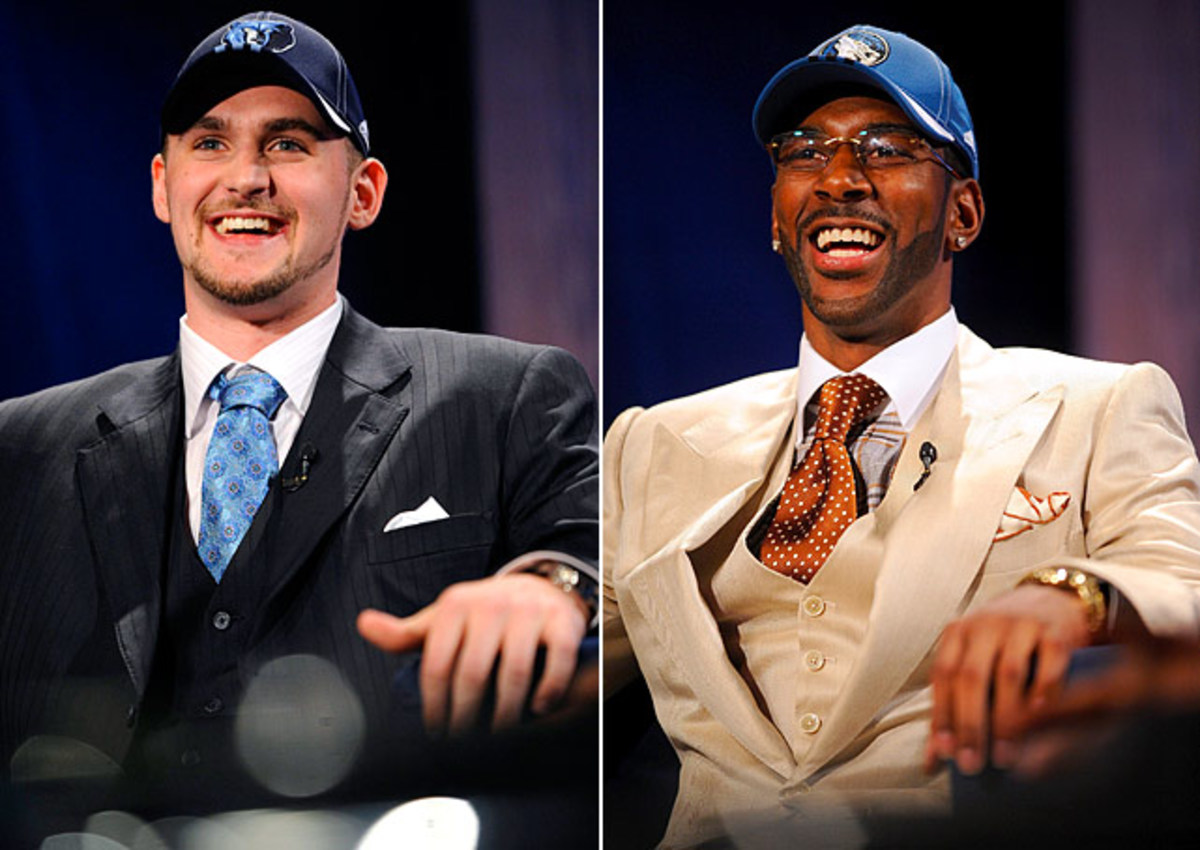
Kevin Love has averaged a double-double in each of his past four seasons while hitting 35.2 percent of his three-point tries for his career, though durability has become a concern. Mayo saw his minutes, starts, and shooting decrease through his four years with Memphis, but had a resurgence after signing with Dallas in 2012.
2007
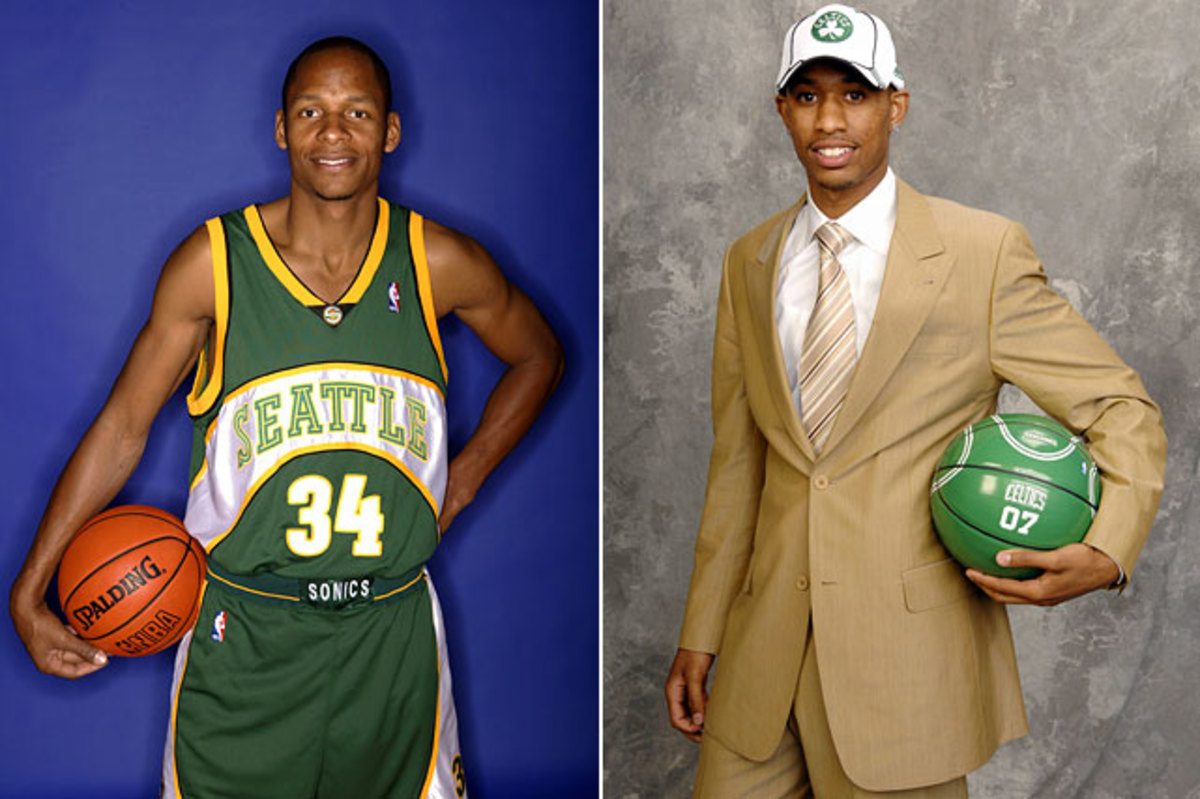
One of Sam Presti's first moves in building what has become an Oklahoma City juggernaut wasn't pretty from a basketball perspective, but it helped clear more than $14 million off the books and allowed the team to rise toward the top of the draft lottery. After plugging Ray Allen and Davis into a team that won the '08 title, it's unlikely Boston regrets opening its wallet to help Presti out.
2006
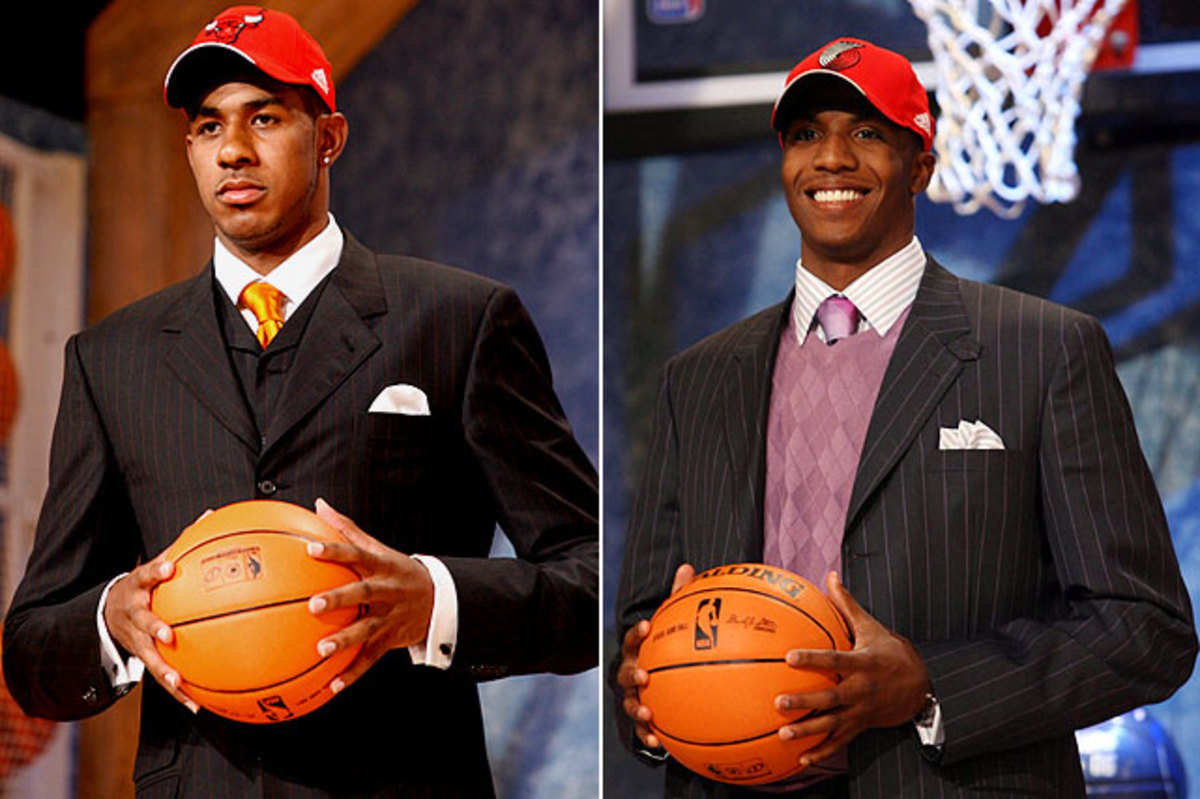
While Thomas had impressed at LSU and in pre-draft workouts, Aldridge had acquired a "soft" label. In seven seasons since, Aldridge has grown into an All-Star while averaging 18.3 ppg, 7.8 rpg while posting a true shooting percentage of .537. Thomas was traded four years later to Charlotte for Acie Law, Flip Murray and a future first-round pick, and has crafted a career as a defensive-minded reserve.
2006

Roy didn't shine for long but he did shine brightly. He reached the All-Star Game three times between 2008-10 after winning Rookie of the Year honors and became one of the NBA's best swingmen. Roy averaged 10 points, 4.7 assists and 4.3 rebounds and got Portland into the playoffs from '09-11. Unlike Roy, whose knees have forced him to retire twice, Foye is still playing and has transformed himself into a three-point threat (he made 178 for the Jazz last season). Utah is Foye's fourth NBA home after his start in Minnesota, a stop in Washington and two seasons with the Clippers. But scoring 11.5 ppg and averaging 3 apg are not the type of numbers that get teams clamoring for your services after retirement (as teams were for Roy).
2006

With Yao Ming and Tracy McGrady in the fold, the Rockets gambled that Battier would provide the glue needed to win a championship. Battier helped the Rockets into the playoffs in three straight seasons, but couldn't make up for the losses of McGrady and Yao to injuries. While Gay hhelped Memphis reach the playoffs in 2011 and '12, the Rockets can only imagine how Gay's 18 points, 5.8 rebounds and 34.3 percent three-point shooting might have played in place of an absent McGrady.
2006

With Steve Nash, the Suns didn't have much need for another point guard, but part of the art of a good trade is capitalizing on value. Dealing Rondo for a pick that would become Rudy Fernandez (who was, in turn, traded to Portland for James Jones) wasn't an ideal return on investment for a point guard with four All-Star game appearances by the age of 27.
2002

Camby developed into one the NBA's best defenders, Nene developed into one of the NBA's better-shooting centers and the Nuggets developed a core that future draft pick Carmelo Anthony led to the playoffs for seven straight years. McDyess developed a knee injury that saw him miss the '02-03 season, play 18 games the following campaign and get traded to Phoenix in January 2004.
2001
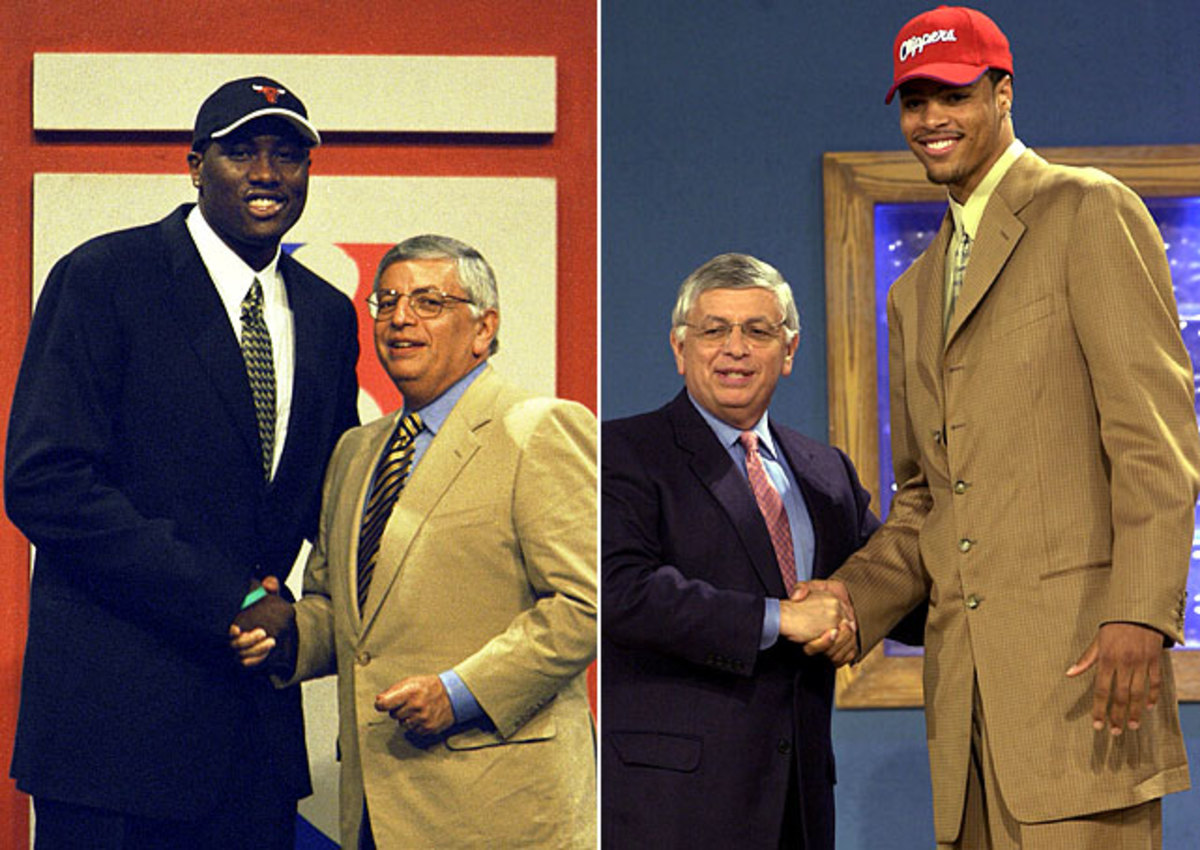
It's not often a trade to the Clippers means a positive change in circumstances, but Brand's move to the West allowed him to escape a team that lost 67 games in his last season in Chicago. Though Brand reached the playoffs only once with the Clippers, he did become one the league's most consistent power forwards, regularly averaging 20-plus points and 10 rebounds a game. Chandler showed some elements of what would eventually make him one of the NBA's best defenders. The Bulls played him largely off the bench before trading him in '06 to the Hornets for P.J. Brown and J.R. Smith.
2001

Gasol won the Rookie of the Year, has played in four All-Star Games, won two championships while averaging 18.4 points, 9.2 rebounds and 1.6 blocks per game in an 12-year career. Abdur-Rahim played well in his two-plus seasons with the Hawks and made the All-Star Game in his first season in Atlanta, but he was shipped out in 2004 in a deal for Rasheed Wallace.
1998
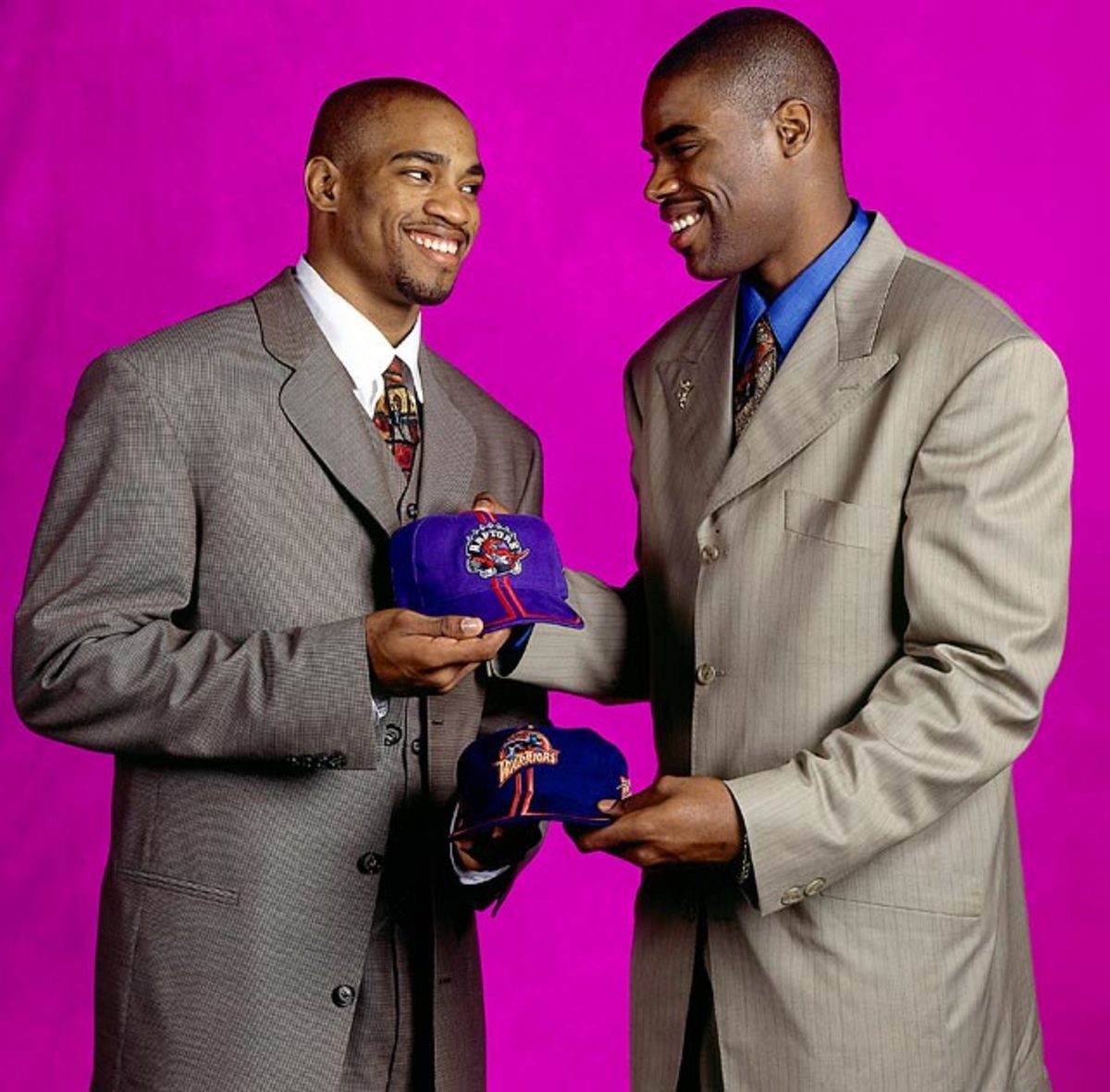
The former Carolina teammates paired up again in an exchange that produced generally similar careers -- consistent scorers and nice guys whose teams often appeared to lack the tenacity to fight through in the toughest moments. That didn't stop the two from reaching a combined 10 All-Star Games, but it did prevent both from becoming franchise cornerstones.
1998

The Bucks gambled on the known quantity Traylor was at Michigan over the relatively new influx of foreign players of which Nowitzki was a part. Traylor averaged 4.8 points and 3.7 rebounds per game and was out of the league in seven years. Nowitzki finished third in the MVP vote after his 7th year and won the award two seasons later. He also has made 11 appearances as an All-Star, won a championship and established a new paradigm as a stretch power forward.
1998

If Donnie Nelson hadn't won Executive of the Year after his second draft-day home run, there should have been an investigation. Garrity lasted one season in Phoenix before being traded to Orlando, where he crafted a role as a three-point specialist. Nash, then a third-year guard, helped make the Mavs a postseason regular before going legend-mode in Phoenix, where he later won back-to-back MVP awards.
1996
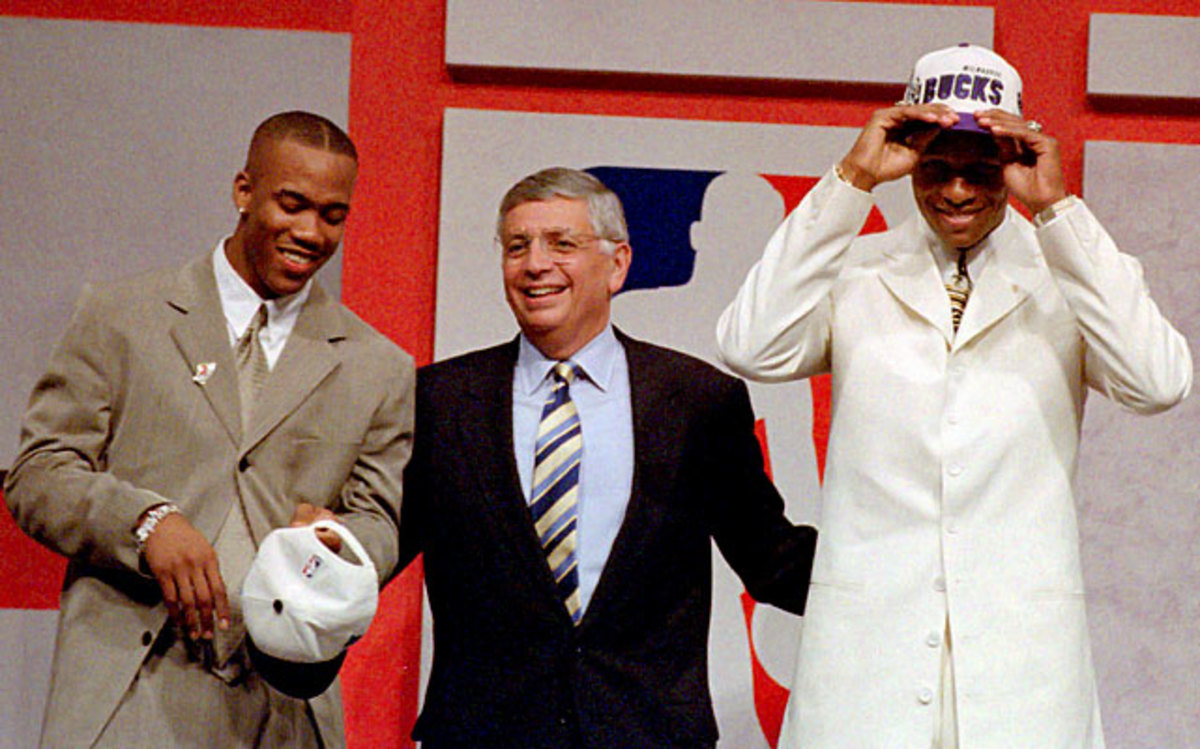
Having just completed his 16th season, Allen, the league's all-time leading three-point shooter and a 10-time All-Star, can only imagine how many rings he might have won had he teamed with Kevin Garnett in Minnesota in '96 rather than 11 years later in Boston. Instead, Marbury spent three years in Minnesota before his desire to be paid in line with Garnett prompted the Timberwolves to trade him to New Jersey. Though a gifted playmaker and scorer, Marbury's career was marked more by the playoff series he never won (aside from a brief role as a reserve with Boston in '08-09 than by the 18.4 points and 7.3 assists he averaged in his career.
1996

(Technically, the deal was completed on July 11, but the parameters were set down on draft night.) Front offices should have known that when then-Lakers GM Jerry West called, that they should hang up. The Hornets didn't and delivered L.A. the key to five titles in 12 years. Vlade Divac led Charlotte to a pair of short-lived playoff appearances before bolting for Sacramento as a free agent after the 1998-99 lockout. Kobe Bryant, on the other hand, has gone on to score the fourth-most points in NBA history.
1993

What looked to be a trade in which everyone benefited fell apart thanks to the actions of others. Webber, a five-time All-Star, became one of the NBA's most versatile big men, though not for the Warriors, who traded Webber after one season. Hardaway's passing and shooting provided a seemingly perfect perimeter complement to Shaquille O'Neal and helped fuel the Magic to the Eastern Conference title in 1995. O'Neal broke the partnership when he departed to L.A. as a free agent, though Hardaway was able to pull Orlando into two more postseasons.
1987
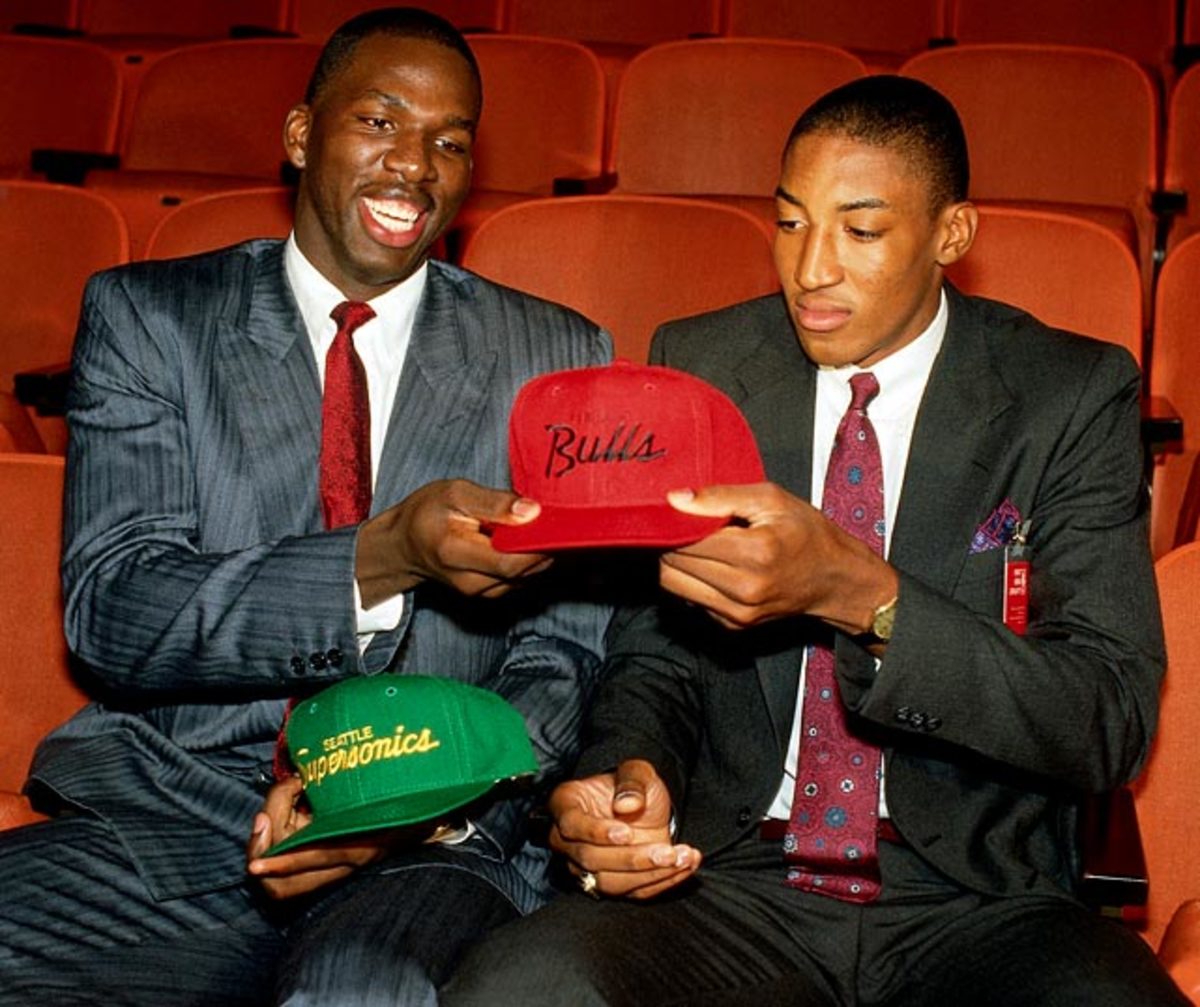
The rule of thumb is not to trade big for small, but Bulls GM Jerry Krause smartly bucked convention in acquiring a swingman in Pippen, who would help the Bulls win six titles and come to be voted one of the NBA's 50 Greatest Players. The 6-foot-11 Polynice averaged 7.8 points and 6.7 rebounds per game while playing fewer than 24 minutes a game over 15 seasons with five teams.
1986
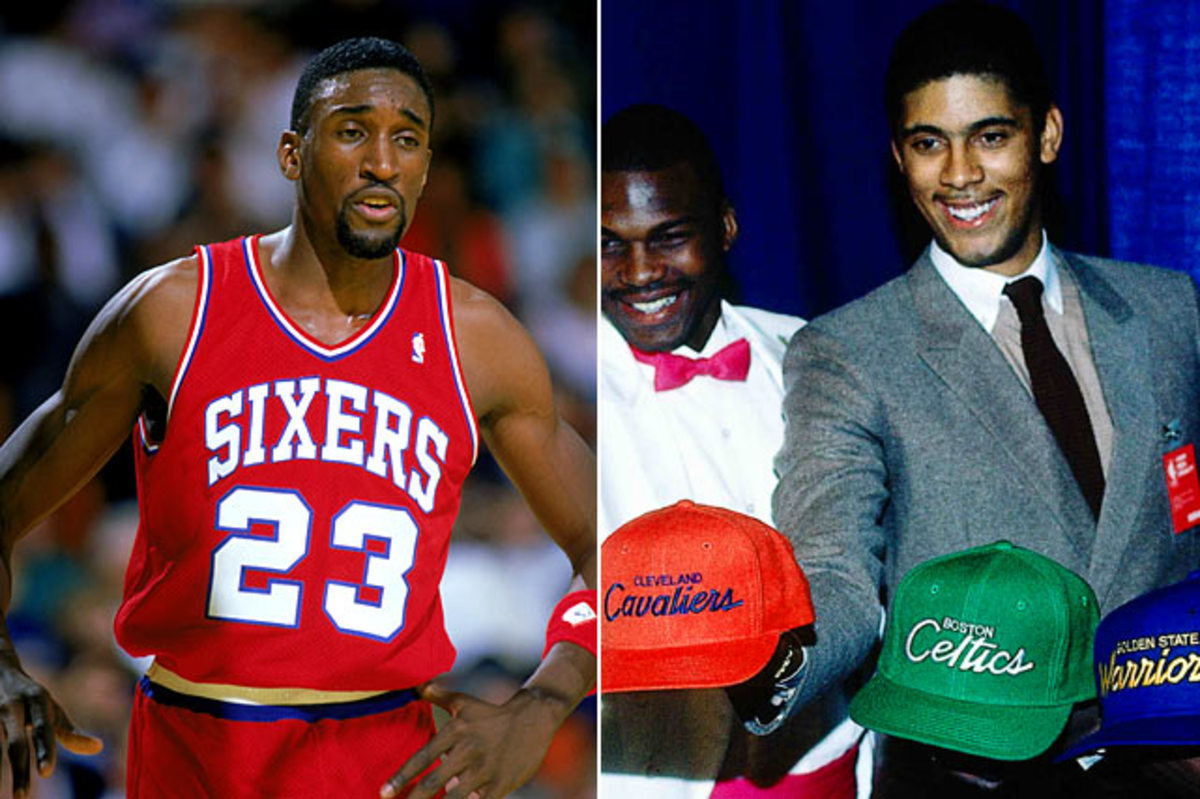
The Cavs parted with the 25-year-old Hinson and got the No. 1 pick from the Sixers. Hinson led Philly to the playoffs in his first season there, averaging 15.3 ppg, 6.7 rpg and 1.8 bpg. After another 29 games in his second Sixers season, Hinson was banished to New Jersey as part of a package for Mike Gminksi. Cleveland used the first pick on Brad Daugherty, who became a five-time All-Star while leading the Cavs to five playoff appearances in six seasons. He also proved a model of consistency, even if it wasn't flashy, by averaging at least 17 points and 8 rebounds in six straight seasons. Send comments to siwriters@simail.com.
1986

Then Cavs GM Wayne Embry found a well-suited complement for 1986 No. 1 pick Brad Daugherty for a minimal fee -- a second-round pick in '89 to the Mavs. Price guided Cleveland to the playoffs seven times in nine seasons while posting an impressive 40.2 percent three-point mark for his career and the NBA's best-ever free-throw mark (90.4 percent). Not bad for a second-rounder. Send comments to siwriters@simail.com.
